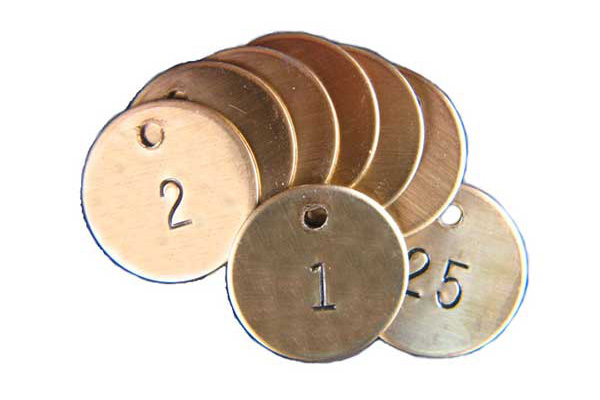Dating back to ancient Roman times and invented for the purpose of regulating water systems, the first valves were made of bronze. The word “valve” ultimately derives from the Latin verb volvere, “to turn or roll,” but later evolved into Latin valva, referring to the moving part of a door. In essence, a valve is a type of door. By definition, then, a valve is a device that controls or directs the flow of a substance (whether liquid, gas, or slurry) by opening, closing, or partly obstructing a passageway through which the substance is able to pass. The valve regulates the force of the flow of the substance through a pipe or other conduit.
What Is a Valve Tag?
In a modern industrial setting, a valve tag is a simple signaling device indicating at a glance the function or contents flowing through a given pipe or other conduit. If the substance flowing through the pipe is nothing more dangerous than plain, room-temperature water, the information conveyed by the tag is of minor importance. But if the pipe carries any substance that is extremely hot, cold, corrosive, or toxic, then the purpose of the valve tag can be characterized as mission-critical. Therefore, valve tags play an integral role in any safety system designed to reduce the risk to persons or property related to releases, spills, accidents, and injuries due to improper use of valves within a facility.
Ketchum Mfg. valve tags are made from brass or stainless steel (though in other settings they might also be made from plastic, wood, or even paper). Most often they take the form of a small circle imprinted with identifying numbers, letters, or words. The primary goal of a valve tag is to advertise the presence of substances that pose a significant hazard should they be inadvertently released.
Valve Tags in Industrial Safety Systems
It is vital that safety policies in an industrial setting be designed first and foremost to unambiguously define the types of conduits to be tagged, the substances those conduits contain, and the identifying conventions to be used on the tag. OSHA and other safety organizations mandate the use of tags, but do not provide a great deal of guidance on where those tags should be positioned. This is a case where common sense provides the best direction. Answers can be found in asking the right questions, such as:
- What does the conduit contain?
Knowing whether it is hot steam, boiling water, a flammable liquid, or a corrosive agent is highly relevant to workplace safety and the decision as to which remedial systems should be put in place nearby. - What happens if the valve is not properly closed?
If the valve is left open and is likely to release a toxic gas or other hazardous substance, the valve tag should clearly communicate this fact in some way. - Is a letter or number sufficient warning of the risk involved?
Even with clearly defined tagging conventions and well-organized record-keeping in a central office, time is of the essence in the event of a valve failure or accidental release of a dangerous substance. There isn’t enough time to look up the risk and its remediation. In those instances, the valve tag should be accompanied by a more detailed label spelling out the danger.
Once a valve tag convention in the workplace has been decided on, it is vital to follow that convention to the letter. Most typically, valve tags are attached to the external valve control itself (e.g., faucet handle or switch lever). If a conduit is repurposed for conveying a new substance, or a valve is replaced, an appropriate valve tag should be installed, with corresponding updates to the facility documentation.








